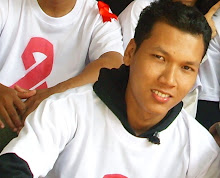
Indonesia
In general, nurses are caregivers, who help in early detection of
cases, provide IEC, collaborate in treatment programmes and help
empower the local community to control diseases.
Nurses/midwives provide patients, family and the community with
information and education on prevention and basic care of patients
with HIV/AIDS, TB and malaria. The role in advocacy is to safeguard
patients right to treatment and negotiate with authorities and
community leaders for support in the control of the abovementioned
diseases.
Concerning research nurses take part as investigators in
studies and research on HIV/AIDS, TB and malaria, and are
involved as team members in data processing and reporting of
research results and follow up plans.
The Indonesian government has initiated programmes on
HIV/AIDS. These activities are in the planning stage and are
expected to be implemented next year. The government has
arranged refresher courses on TB for nurses and midwives.
Standard procedures have been developed for nurses and midwives
at the health centre and sub health centre. There are plans to
conduct training of village midwives on early identification of cases
and the supervision of medication. They also plan to conduct
training of nurses and midwives in the management of TB cases.
The government will develop technical guidelines for health centres
on management of malaria. Training models will be developed for
nurses and midwives at the health centre level, and village
midwives in high-risk malaria areas.
Indonesia improves the skills of nursing and midwifery
through government programmes and through educational
institutions such as the Midwifery Academy and the Nursing
Academy, Community health nursing and care of communicable
diseases Included in the curricula. In the efforts to improve the
knowledge and skills of its members in the management of
HIV/AIDS, malaria and TB, the National Indonesian Nurse
Association has conducted several seminars and training events.
The Indonesian Midwives Association similarly conducts training
seminars in STD, malaria and TB for members.
It was concluded that HIV/AIDS, TB and malaria are community
health problems and the nurses and midwives are front line health
workers in the implementation of HIV/AIDS, TB and malaria control
programme, but they are not utilized/empowered to the
maximum. They play an important role in decreasing the morbidity
rate of HIV/AIDS, TB and malaria, because they are around
patients, families and in the local community. Nurses and midwives
need continuous training to improve knowledge and skills in new
methods to be able to better identify HIV/AIDS, TB and malaria
patients as well as in case management. The nurse/midwives need
training to improve skills in advocacy and in collaboration.
Based on the country reports, following is a summary of the
achievements, facilitating factors and issues in developing capacity
of nurses and midwives in response to HIV/AIDS epidemic and
resurgence of TB and malaria:
Main Achievements Active involvement of nursing/midwifery professional
association in national health programmes in a few
countries;
Availability of in-service education programmes (e.g.
seminar and workshops) for nurses and midwives on HIV/AIDS, infection control, IEC, counselling, DOTS and
Malaria in most countries
Availability of standard guidelines or protocols for nurses
and midwives on HIV/AIDS, home based care, DOTS and
malaria management;
Some successful experiences working with community,
people living with HIV/AIDS (PLWA) and other sectors (e.g.
establishment of self-help group);
Incorporation of HIV/AIDS, TB and malaria contents to a
certain extent, in pre-service (basic) nursing/midwifery
curriculum;
Availability of training modules for standardized education;
and
Increased sensitization and exposure of nurses and nursing
students to prophylactic and curative care of HIV/AIDS.
The Facilitating Factors Political commitment and support;
Recognition that HIV/AIDS is a crisis and thus support is
easily mobilized;
Greater input and resources in management of
nursing/midwifery workforce;
Policy direction for involvement of all care providers in
planning and implementation of HIV/AIDS, TB and malaria
programmes;
Membership of nurses in various subcommittees of the
National AIDS Committee;
Functional supervision and evaluation systems;
Availability of advanced or post-graduate education for
nurses and midwives;
Training of a core group of nurses/midwives in leadership
and development;
Use of standardized curriculum which would facilitate
nationwide planned changes;
Readiness to revise/update the curriculum; and
Use of model school approach to try out innovations in
nursing/midwifery education.
Issues and Constraints Limited involvement of nurses/midwives in policy
formulation and programme planning and management in
most countries;
Weak nursing/midwifery leadership who are unable to
participate in the decision-making, low assertiveness of
nurses and midwives keeping them from getting involved in
policy and programme formulation;
Ill informed nurse/midwives;
Inadequate dissemination of health policy;
The brain drain of nurse/midwives, lack of sanctioned
posts;
Insufficient coverage of HIV/AIDS, TB and malaria in nursing
and midwifery curriculum;
Lack of formal structure for collaboration between the
nursing/midwifery sector and national health programme,no established mechanisms for nursing/midwife expertise
involvement;
Ill prepared nurses/midwives lead to stigmatization of TB
and HIV/AIDS patients;
Inadequate opportunities for practical experiences to
nursing students e.g. not being allowed to do risky
procedures; and
Legal issues that need to be addressed for expanded roles
of nurses/midwives.
The Lessons Learnt Countries have different priority health problems and no
solution will be applicable to all countries.
The nurses/midwives have to go beyond curative care, they
have to provide comprehensive care (i.e., preventive,
promotive, curative and restorative care) in order to
enhance their contribution.
Existing education has not adequately prepared
nurses/midwives for comprehensive care.
There are some success stories (best practice and potential
best practices) that can be shared and promoted.
Best practice matrix must be developed and widely
disseminated to promote further application.
FIELD VISITS
Field visits were arranged to study nursing care for patients of
severe malaria as well as HIV/AIDS and for educational preparation
of nurses. Summary of the visits are provided below:
Hospital for Tropical Diseases, Faculty of Tropical Medicine,
Mahidol University
A field visit to the Hospital for Tropical Diseases was arranged to
study nursing care for severe malaria patients and educational
preparation of nurses. The participants were briefed by Professor
Polrat Wilairatana, Director, Hospital for Tropical Diseases on the
function of the Faculty and the Hospital for Tropical Diseases as
well as various aspects of malaria and management of the severe
malaria cases. Nurses were highly recognized as important
members of the health care team as well as of a research team in
this establishment. Nursing care activities at the ICU were also
presented by Ms Suparp Vannaphan, Head of ICU prior to a visit to
the ward.
The Faculty of Tropical Medicine is, apart from the research
activities, also engaged in master and doctorate educational
programmes and short training courses for health personnel at
national and international levels.
A visit was paid to the ICU for severe malaria and the wards
for uncomplicated malaria cases. The hospital is getting patients
mainly from outside Bangkok from malaria-infested areas. The
patients are enrolled in research programme, which means that
they are admitted for a full month for a study free of charge.
Bamrasnaradul Infectious Diseases Hospital
A visit was arranged to Bamrasnaradul Infectious Diseases Hospital
to study nursing care of HIV/AIDS patients and educational
preparation of nurses and midwives. The participants were briefed
about the hospital and its functions by the director of the hospital.
Processes and educational preparation to equip the nurses and
midwives to deal with HIV/AIDS patients were presented by Ms
Yaowarat Inthong, Senior Nurse Administrator. A visit was then
made to a few HIV/AIDS Units including day care centre.
The hospital was established in 1987 and consists of various
facilities to assist HIV/AIDS patients ranging from in-hospital
service, ambulatory care unit, laboratory services, counselling
service (individual, group counselling, family counselling) and day
care centre where patients and families can get advice on AIDS.
Candlelight for Life’s Club was established to provide opportunities
for people with HIV to share experiences and information on
HIV/AIDS. A research centre in the hospital supports and promotes
research to enhance development of care and treatment. The
research to date has been in the clinical, laboratory and nursing
care fields. The hospital provides training courses to support
professional staff at all levels in order to increase their knowledge,
skills and confidence in the care and treatment of HIV/AIDS.
Nursing service in Bamrasnaradul Hospital is provided as
comprehensive care and the systematic care. Patients are triaged or
screening by triage nurses (nurse practitioners with skills and
expertise in care of complicated HIV/AIDS cases, through formal
training). And care is provided accordingly. A triage nurse is capable of carrying out some medical interventions. Standard
precaution is implemented by the staff to prevent occupational
exposure to HIV.
Reflections on Lessons Learnt from Field Visits
(a) Hospital for Tropical DiseasesSEA-CD-125
It was a very impressive hospital with well-trained nursing staff.
The hospital was well equipped both technically and staff wise and
the environment was clean. The hospital did not do much in health
promotion for the prevention of malaria.
It was noted that the nurse in charge of the ICU for severe
malaria had a very heavy workload, so did other nursing staff, but
they were very competent in handling technical equipment and in
following the vital signs of each individual patient. Real partnership
between medical doctors and the nurses was observed in the care
for patients. There was also ongoing joint research. The patient
nurse ratio at the ICU was 1:1. The ratio in a general ward is
around 1:4-5 nurses. The group found that supply and equipment
and the good working environment was very conducive for the
provision of quality care of the patients. Good ventilation and clean
environment was noted and there was ongoing in-service
education for skills development and hand on experiences. The
nursing records were observed and it was found that it could have
been more comprehensive. The nurses had no role in health
promotion on the prevention of malaria.
(b)Mrasnaradul Hospital
This hospital was found to have a very well organised VCT service,
it was also observed that there was a good patient/nurse ratio, a
clean and good environment for provision of quality nursing care.
The hospital conducted ongoing research with other universities
and interested partners with involvement of the nursing staff. The
team concluded that there was adequate ventilation in the TB ward;
patients and nurses used different masks. The nurses only
changed mask every 3-4 days probably due to the cost of masks.
The team was not sure whether confidentiality was practised in the
in-patient unit, because the patients in the ward seemed surprised
when the team entered. No curtains around beds were pulled and it
was unclear whether patients had given their consent to the visit.
Issues on attitude towards the patient and whether psychological
support was extended to in-patients were discussed. It was
observed that the nutritional condition of the patients should be
looked into although the majority of patients were in the terminal
stages of AIDS.
The nurses received in-service education e.g. TB. Questions
arose on whether policies to protect staff e.g. post exposure
prophylactic treatment and support to staff were put in place. It
was obvious from the presentation that nurses master a
multiplicity of roles, such as being involved in policies, as nurse
counsellor, nurse practitioner, and image nurse. The nurse
practitioners helped in reducing not only the doctor’s workload,
but also in contributing to efficient care. The general conclusion
was that Thailand managed to increase competencies for nurses to
respond to HIV/AIDS very well.


Tidak ada komentar:
Posting Komentar